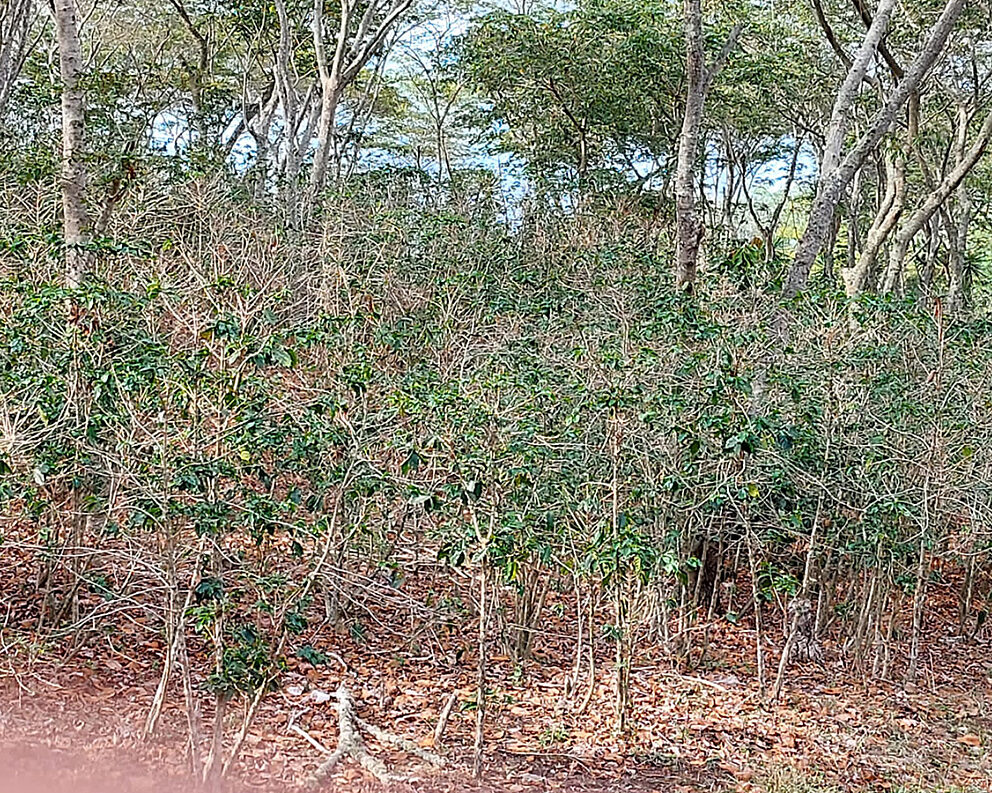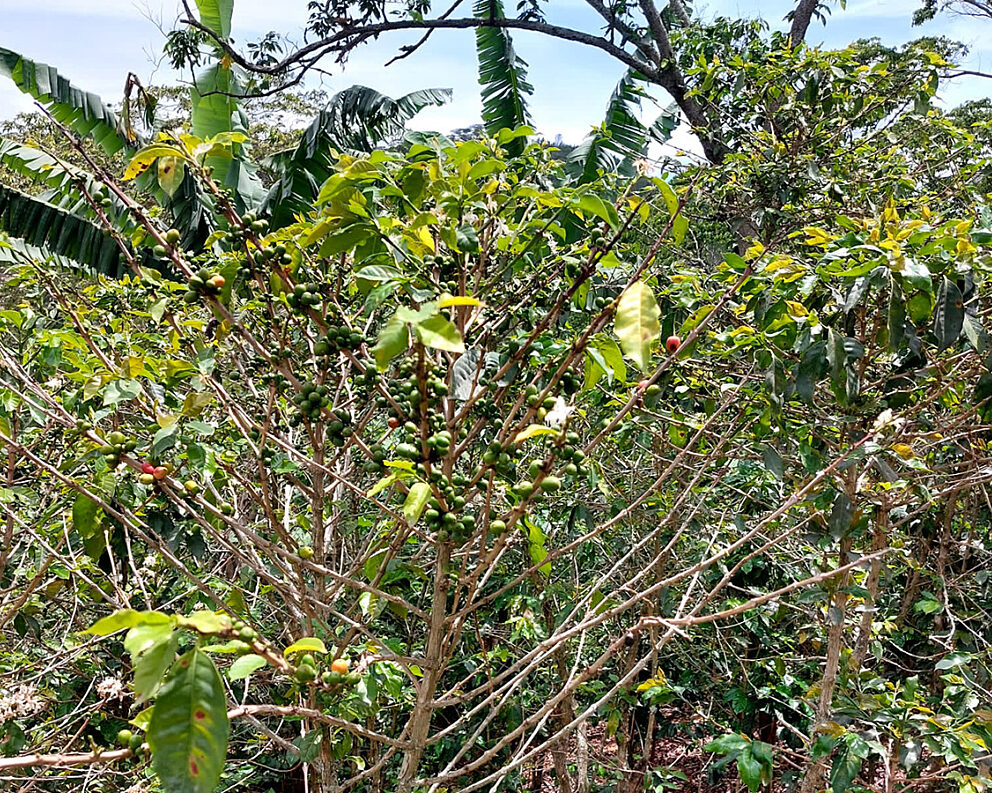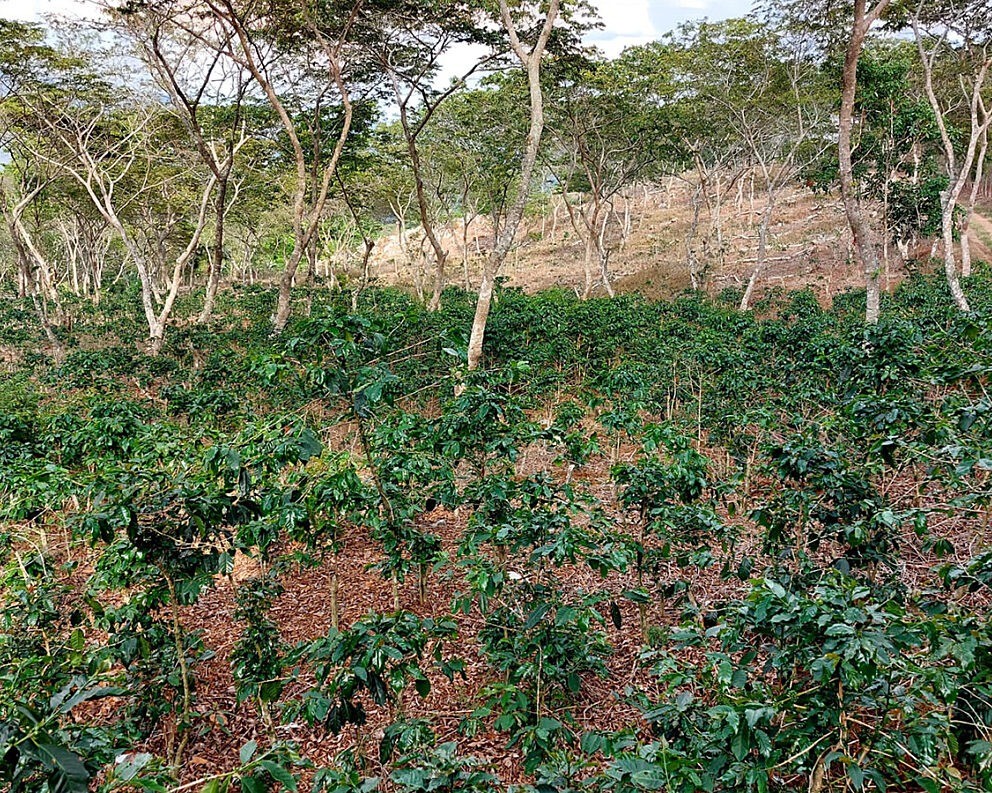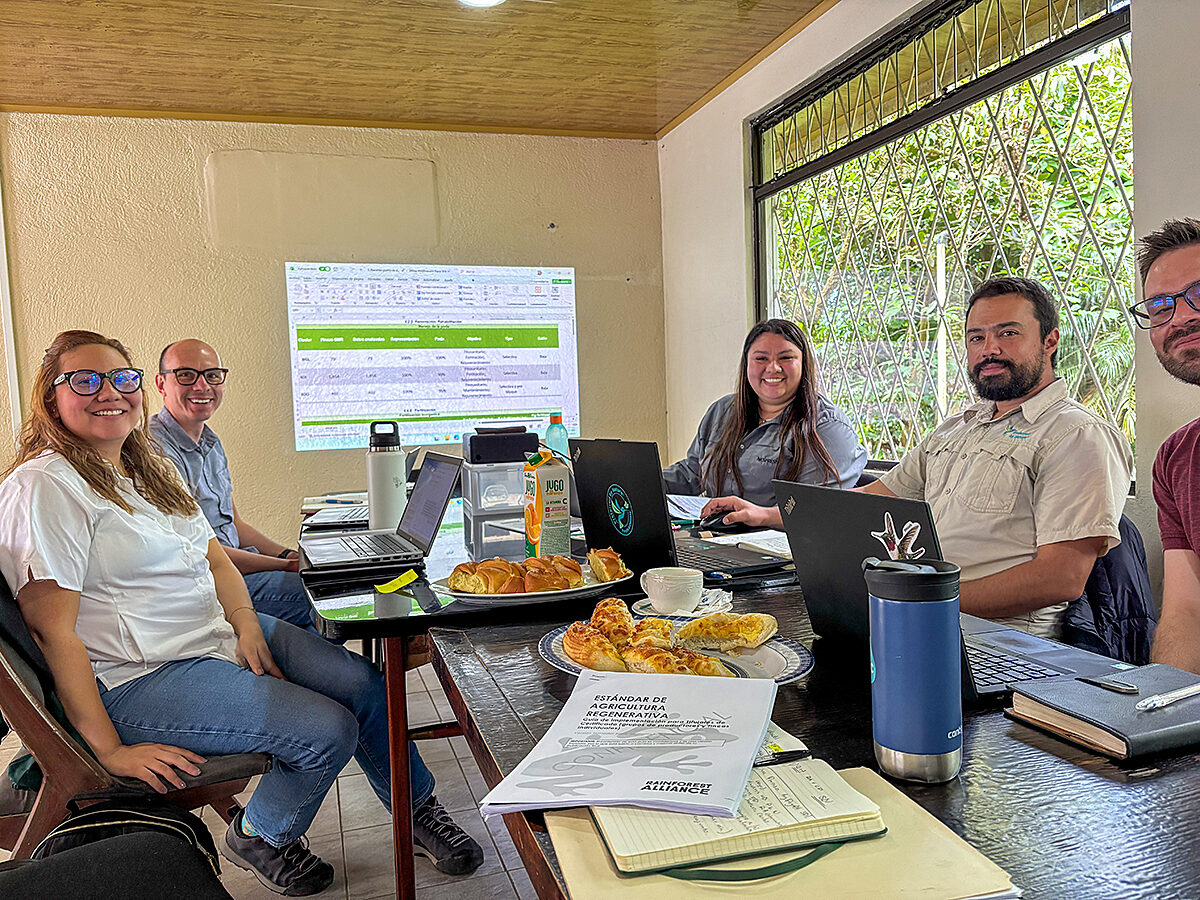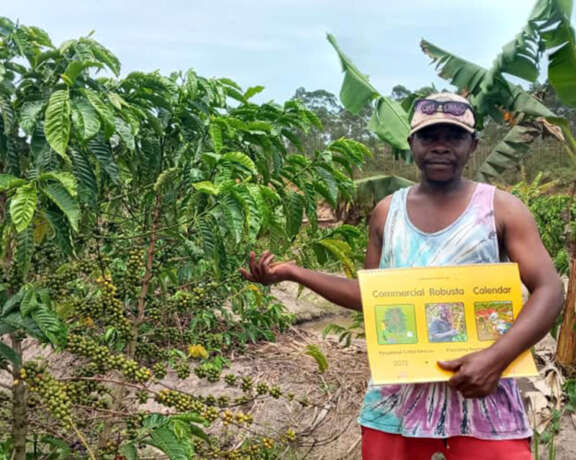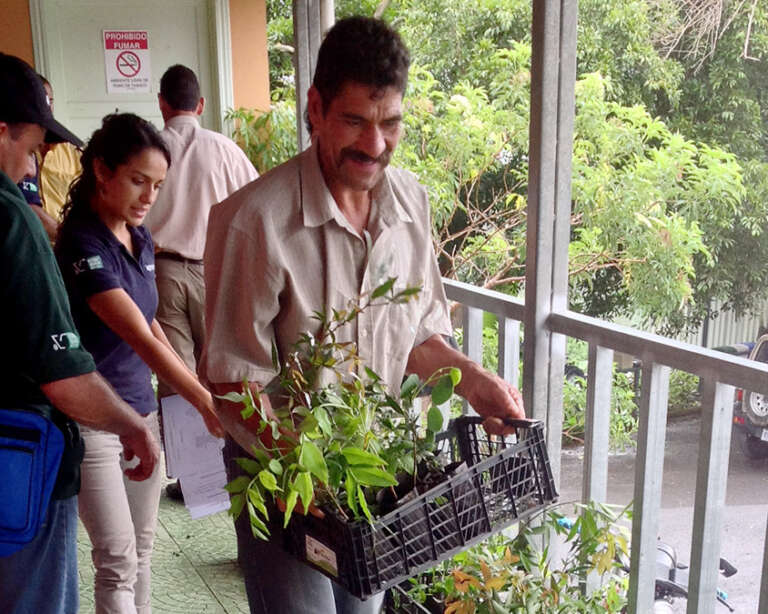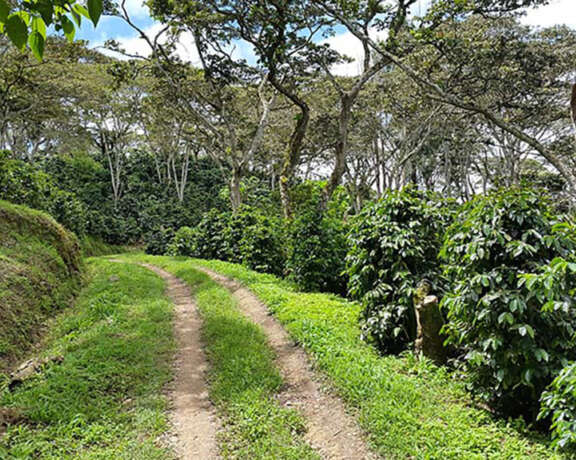Coffee farming in times of El Niño
Impact and advice for coffee farmers
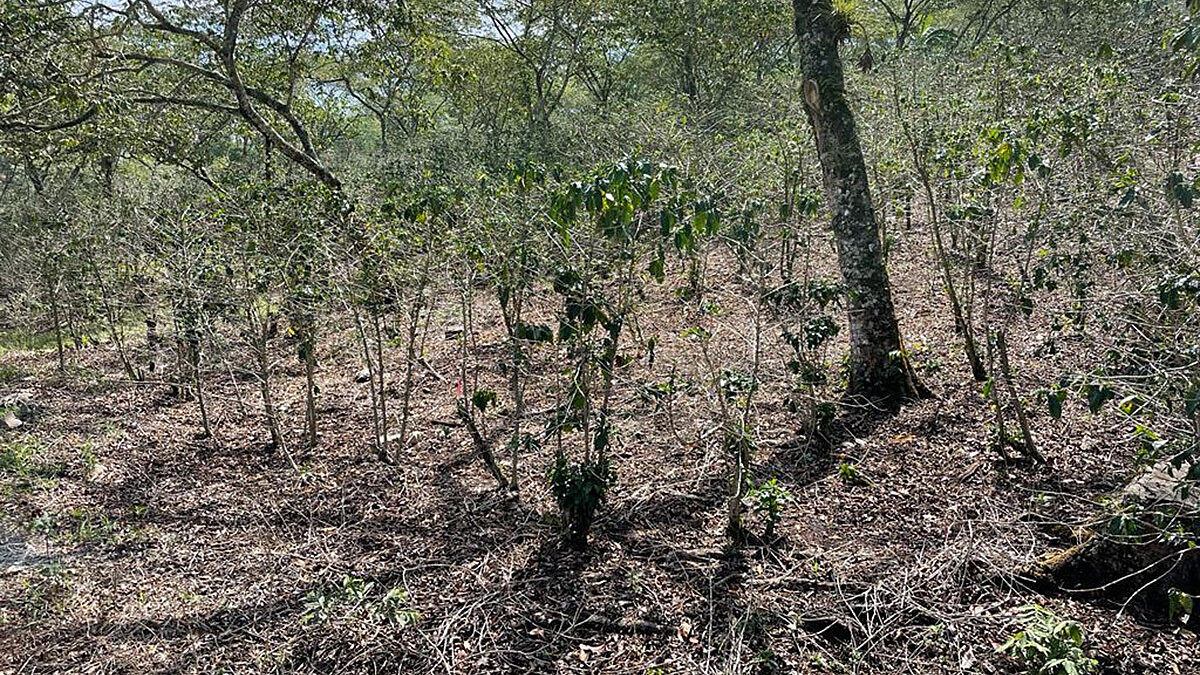
The onset of a new El Niño event presents challenges for coffee farmers.
Record temperatures and a new El Niño event necessitate special attention from coffee farmers.
July 2023 saw two important developments related to the climate crisis. First, on 3 July, global temperatures reached a record high, averaging 17.01°C. That record lasted only until the next day, when average global temperatures climbed to 17.18°C – and new records were set the next two days, reaching an unprecedented 17.2°C on 7 July. These are average temperatures for the entire planet, including many regions currently in winter.
Second, on 4 July, the World Meteorological Organization (WMO) declared the formal onset of El Niño, a recurring weather pattern that increases temperatures and impacts billions of people. The WMO forecasts there is a 90 percent probability of this El Niño event continuing through the second half of 2023, and expects it to be ‘at least of moderate strength’.
As a new El Niño period starts, we spoke with several of our expert colleagues to explore the effects of this weather phenomenon on coffee farmers and what can be done to mitigate the more worrisome aspects.
What is El Niño?
El Niño is a recurring climate pattern caused by the interplay of weakening westward-blowing trade winds around the Equator and warming surface waters in the eastern Pacific Ocean. As these waters warm, the weather is influenced in sharply distinct ways in different regions – along with generally higher temperatures, some areas experience increased rainfall while others face heavy droughts, and El Niño can spur hurricanes in the Pacific while reducing their likelihood in the Atlantic. A related phenomenon is La Niña, a cooling pattern that occurs as a counterpoint to El Niño phases.
While El Niño is a natural phenomenon, it compounds the effects of human-caused climate change unpredictably, in what the WMO calls a ‘double whammy’ effect – a May report from the agency predicts there is a 98% likelihood that ‘at least one of [the] next five years, and the five-year period as a whole, will be warmest on record, beating the record set in 2016 when there was an exceptionally strong El Niño’.
How does El Niño affect coffee farmers?
It’s important to note that El Niño has regional distinctions, sometimes even within the same country – there’s no one-size-fits-all description of, or remedy to, El Niño.
Claudio Castro, Global Manager of the Volcafe Way farmer support programme, points out that the Central Pacific regions of countries such as Honduras, Guatemala, Costa Rica, and Colombia typically experience extended droughts under El Niño, while the Atlantic regions of these countries along with Peru receive excessive rainfall.
Plant growth and farmer routines can be dramatically disrupted by El Niño.
‘Insufficient or unpredictable rainfall can lead to reduced fruit-set and abnormal fruit development in coffee farms,’ explains Castro. ‘Rain is necessary for synchronised flowering and proper fruit filling, meaning that lack of it can result in flower abortion and yield reduction.’

Juan Florez, Senior Agronomy Researcher with Volcafe in Colombia, underlines that ‘It is important to remember that plants take nutrients solely and exclusively from the soil. This means that in dry periods of El Niño, when water is scarce, the absorption of nutrients is significantly reduced or may stop almost completely.’
This has knock-on effects. ‘Due to the delays in rain, fertilisation is delayed which affects the coffee plant, jeopardising the productivity for next crop,’ says Andrea Licona, Special Projects Assistant with Volcafe in Honduras.
As the usual farming rhythms are thrown off by El Niño, farmers face an unpredictable harvest.
‘El Niño can alter the timing of coffee cherry ripening and harvesting,’ explains Hermawan, Agronomist with Volcafe in Indonesia. ‘Drought stress can accelerate the maturation process, leading to an early harvest with lower coffee outturns.’
In Robusta-growing areas of Indonesia where El Niño brings heavy rainfall, ‘the excess rain can interfere with pollination and prevent proper development of the coffee beans, resulting in lower yields and potentially lower quality coffee,’ notes Hermawan.
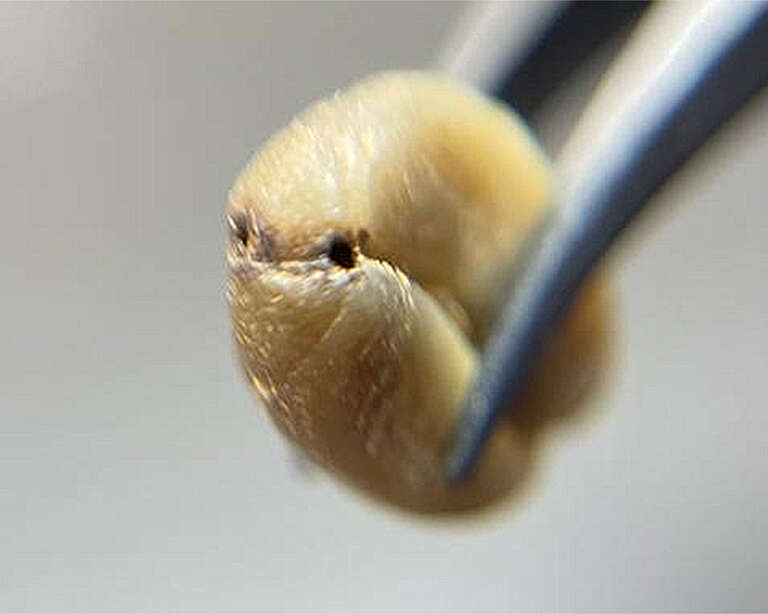
Damage from a coffee berry borer
The changing weather patterns during El Niño also exacerbate other threats that coffee farmers must contend with.
‘When El Niño phenomenon is happening, the coffee is prone to more pests, such as the coffee borer,’ explains Licona. ‘When La Niña phenomenon is happening, the coffee is more prone to diseases, such as rust (la roya).’ Pests and droughts can damage coffee beans, lowering their quality and impacting the price farmers can receive for their harvest.
‘Normally, high levels of coffee borer increase the low grades [of coffee] during the El Niño event,’ says Florez. To mitigate the damage from such pests, he explains, farmers must undertake more maintenance work on the coffee trees and the resulting extra labour costs can further reduce the crop’s profitability.
More broadly, farmers and their families must navigate the impacts of these weather shifts on their food security, access to water, and other necessities.
Responding to El Niño: Practical advice for farmers
While El Niño presents real challenges for coffee farming communities, there are actions which can help mitigate the worst impacts of the changing climatic conditions. Farmers must adjust their practices during an El Niño event in comparison to La Niña periods – and knowing what to do differently can literally save the farm.
Our Volcafe Way farmer support teams work with tens of thousands of farmers around the world, and see the impact of changing weather patterns on the farmers’ crops and livelihoods. Volcafe Way field teams use a combination of trainings, model farms, and in-person visits to share locally tailored guidance on good agricultural practices that can improve farms’ resilience in the face of such challenges. Likewise, our research teams routinely conduct field visits and analysis to inform Volcafe’s work, improve our preparedness, and share knowledge.
Based on Volcafe’s experience, here are some of the key adjustments coffee farmers can make to sustain their farms during an El Niño period – please bear in mind that local conditions may mean some suggestions are less suitable than others!
Fertilisation
One important change farmers must consider during El Niño is to adjust their fertilisation practices. Since fertiliser needs to be dissolved by rainfall, the timing of the application is critical.
‘The decision to apply fertiliser should be based on the availability and quantity of water and the distribution of rainfall,’ says Florez. ‘In areas with a high risk of water scarcity, only two applications of fertiliser per year should be programmed. It will be necessary to ensure that the plants absorb the greatest amount of nutrients before the critical dry period begins, in order to withstand the conditions that are coming.’
In Honduras, our Volcafe Way teams have made fertiliser available to farmers in advance, notes Licona, ‘so when the first rains fall, there won’t be any delays in applying the fertiliser.’
Soil pH corrections, such as with lime, may also help nourish the parched earth and improve plant health.
Water use
Irrigation systems can also sustain coffee plants through the dry periods, but obviously take foresight and planning.
‘Constructing water storage facilities such as ponds or reservoirs allows farmers to capture and store rainwater during periods of heavy precipitation for use during drier times,’ notes Hermawan.
Since weeds consume a lot of water, weeding is also an important way to preserve scarce water for coffee plants and food crops.
Beyond their crops, Florez suggests that farmers should also collect rainwater from the roofs of farm buildings as a supplementary source for domestic use.
Do not plant coffee during the El Niño event...
Plant maintenance
Stumping and pruning coffee plants during El Niño can provide organic materials to spread on the dry ground, conserving moisture in the soil.
Mulching may also be suitable for retaining moisture in the soil, especially around young plants. Farmers can creatively use uprooted weeds, coffee pulp, or other trimmings to cover the soil.
Shade management and agroforestry approaches can also mitigate some of the worst effects of both El Niño and climate change.
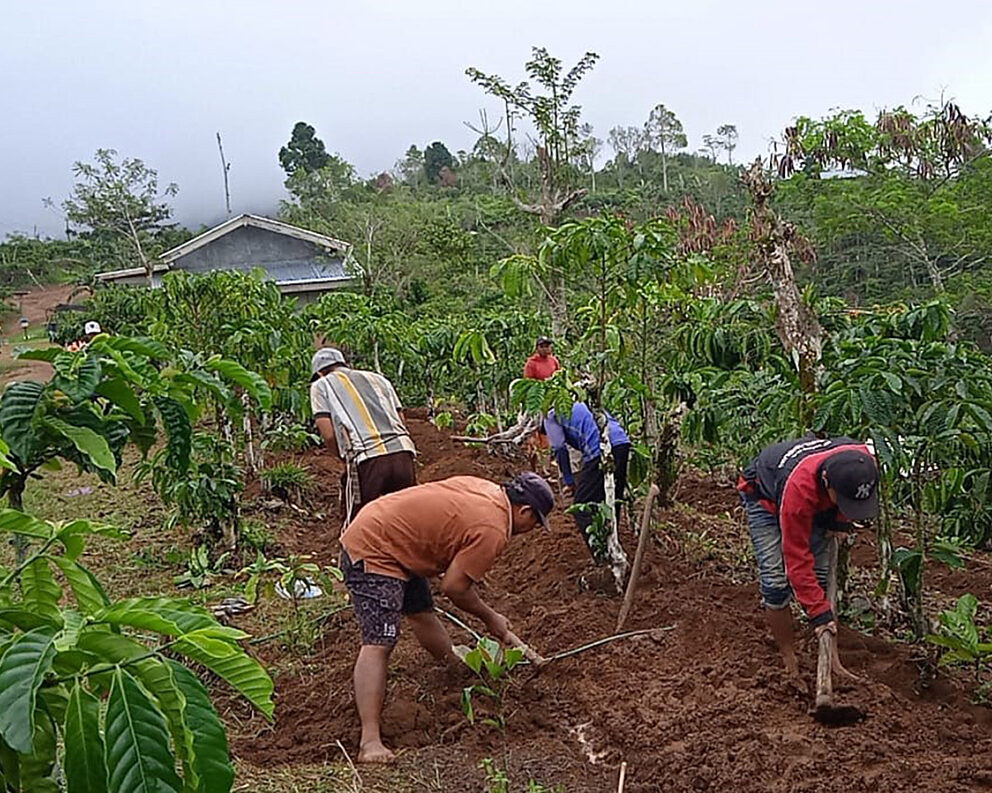
Mulching can help sustain coffee plants
‘Providing adequate shade to coffee plants helps regulate temperature and reduce moisture loss from the soil,’ explains Hermawan. ‘Farmers can strategically plant shade trees or incorporate mixed-culture plantations with other trees to create a suitable microclimate that protects coffee plants from excessive heat and water stress.’
Special care needs to be taken with seedlings and new plantings.
‘Do not plant coffee during the El Niño event,’ warns Florez, adding that ‘shade should be used in sprouts and seedbeds planned to be sown at the beginning of the year to reduce solar radiation, and if necessary, apply irrigation.’
Staying informed
During an El Niño event, applying some of the aforementioned changes can help farmers ride out the worst of the wild weather. But staying informed and having advance knowledge of a forthcoming El Niño will allow farmers to plan accordingly.
‘By accessing weather data and forecasts, farmers can make informed decisions regarding irrigation scheduling, fertilisation, and other farm management practices, adapting to the specific conditions brought about by El Niño,’ says Hermawan.
Amid record temperatures and the onset of a new El Niño period, the remainder of 2023 may prove challenging to coffee farmers. Volcafe will continue to partner with farmers during this period and to offer support through Volcafe Way, agronomic research, sustainability projects with our many partners, and our efforts to promote responsible sourcing.
Marie Renou-Ullrich, Head of Marketing and Communications, email hidden; JavaScript is required



